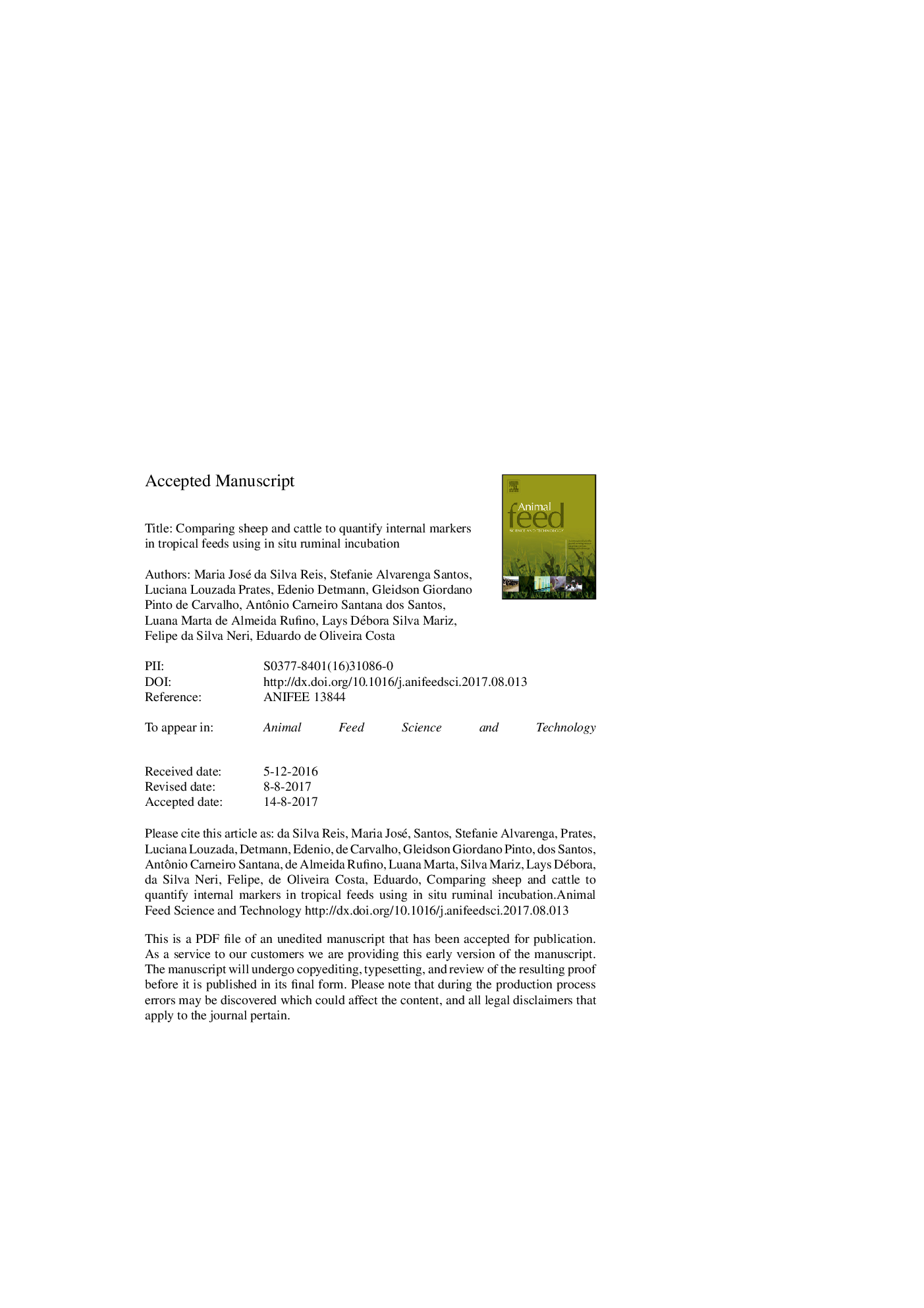| Article ID | Journal | Published Year | Pages | File Type |
|---|---|---|---|---|
| 5538669 | Animal Feed Science and Technology | 2017 | 30 Pages |
Abstract
The main focus of this work was to verify the hypothesis that there are differences between cattle and sheep to obtain internal markers in tropical forages using in situ ruminal incubation. A presupposition that the indigestible fraction is exclusively inherent to feed was considered, and its ruminal incubation in different animal species should not change the estimate of this fraction; but should change the minimum time required to obtain this value, or the critical-time (Tc). The Tc to obtain indigestible fractions were compared between species for neutral detergent fiber (INDF) and acid detergent fiber (IADF) in feeds and feces. A total of 16 samples were divided into two groups of forages; one group of concentrates and another one of feces. These samples were placed inside bags and incubated in the rumens of 4 sheep and 4 cattle, at following time-points: 0, 12, 24, 48, 96, 144, 192, 240, 288, and 336Â h, using two 4Â ÃÂ 4 Latin squares. There was no effect on the species with regard to the degradation rate (kd) of both the aNDF and ADF in alfalfa hay (PÂ =Â 0.36; PÂ =Â 0.14). All other forages, which were tropical types, were affected by animal specie (PÂ <Â 0.05). Cattle was associated with lesser Tc when compared to sheep, both for INDF and IADF. All concentrate feeds were affected by the species (PÂ <Â 0.05), with sheep providing greater Tc for both undegradable fractions. Feces from cattle and sheep fed with low concentrate required higher Tc when incubated in sheep (PÂ <Â 0.05), while feces from cattle and sheep fed with low concentrate required the same Tc to obtain IADF in cattle or sheep (PÂ =Â 0.19; PÂ =Â 0.11). Sheep is not a practical recommendation to obtain internal markers based on in situ trials, due to the high incubation time length to obtain the non-degraded fraction of feeds and feces. Internal markers IDNF and IADF from sheep trials can be obtained from 216Â h of in situ incubation in cattle.
Related Topics
Life Sciences
Agricultural and Biological Sciences
Animal Science and Zoology
Authors
Maria José Reis, Stefanie Alvarenga Santos, Luciana Louzada Prates, Edenio Detmann, Gleidson Giordano Pinto Carvalho, Antônio Carneiro Santana Santos, Luana Marta Rufino, Lays Débora Mariz, Felipe Neri, Eduardo Costa,
